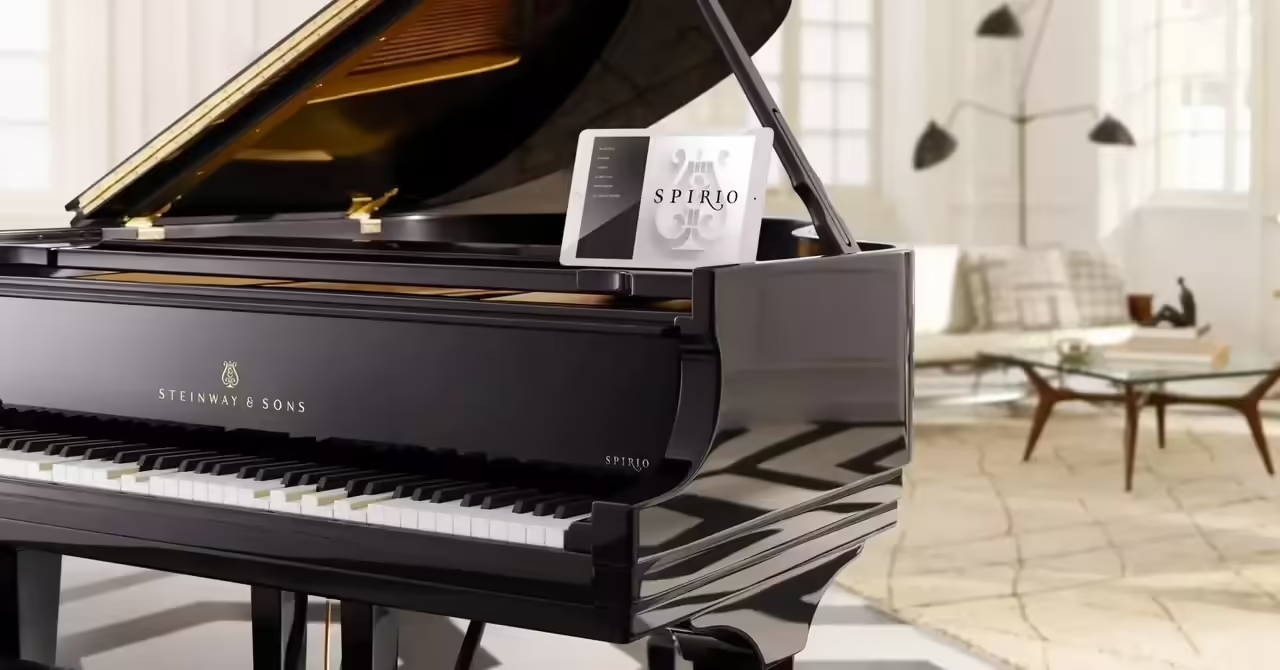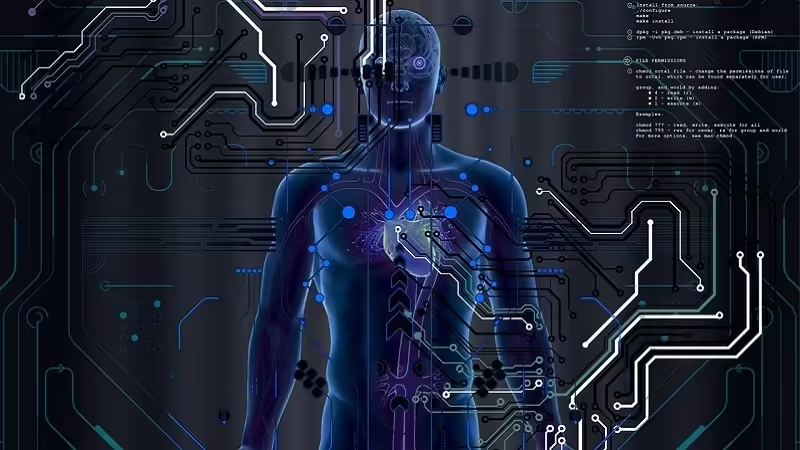
The convergence of music and technology has led to numerous innovations throughout history, and one of the most astonishing today is Spirio, a revolutionary system that has made an indelible mark on the world of music. In particular, the Massachusetts Institute of Technology (MIT) has embraced this innovative piano, recognizing its significance in musical education and research.
Spirio: A Brief Description
Spirio is a high-resolution piano reproduction system developed by the renowned brand Steinway & Sons. What sets it apart from conventional pianos is its ability to accurately record and reproduce a pianist’s performance, capturing even the subtlest nuances of the execution. This self-playing piano employs cutting-edge technology to faithfully recreate the artistry of great musicians, allowing listeners to experience each piece’s unique interpretation as if the pianist were present.
Spirio at MIT: Transforming Music Education and Research
The adoption of Spirio by MIT has elevated music education and research to new heights. Students and professors can study and interpret masterpieces with an unprecedented level of detail, analyzing the techniques and expressions of the great masters. The ability to review and compare performances facilitates deeper learning and a richer understanding of music.
Additionally, Spirio has opened new doors for musical research at MIT. Scholars can analyze recordings of past great musicians, unraveling the secrets of their technique and style. This not only enriches the understanding of music history but also inspires new forms of artistic expression and creative exploration.
The Revolutionary Role of Spirio in Music and Technology
Spirio is not just a high-quality piano but a perfect amalgamation of music and technology. Its ability to capture the unique essence of each human performance and reproduce it faithfully has led to the creation of an unparalleled musical experience. This has triggered a revolution in the world of music, merging traditional craftsmanship with technological innovation.
The connection between the Spirio piano and MIT represents a milestone in the history of music and music education. The combination of excellence in piano performance with advanced analysis capabilities has created an environment where music is not only performed and enjoyed but also deeply understood.
History and Development of Spirio: The Evolution of a Pioneering Smart Piano
The Beginnings of Spirio:
The history of Spirio traces back to the illustrious piano manufacturing house, Steinway & Sons, known for its quality standards and commitment to excellence. The idea behind Spirio was conceived with the vision of combining Steinway’s traditional craftsmanship with the groundbreaking possibilities of technology.
Initial Development:
In the 2010s, Steinway & Sons embarked on an ambitious mission: to create a piano that was not only a masterpiece of craftsmanship but also a cutting-edge technological tool. The goal was to capture the unique essence of piano performances and recreate them with unprecedented fidelity. Thus, the first version of Spirio was born, a grand piano equipped with advanced sensors and recording systems.
Key Milestones in Development:
- 2015: Launch of Spirio: Steinway & Sons introduced the world to the first Spirio piano. This revolutionary instrument not only offered the experience of a high-quality concert piano but also incorporated the ability to accurately record and reproduce musicians’ performances.
- 2016: Technological Updates: In a short period, Spirio underwent significant improvements in its technology. Software and hardware updates allowed for greater precision in data capture, providing musicians and listeners with an even more authentic experience.
- 2018: Collaboration with MIT: One of the most significant milestones was the collaboration with the Massachusetts Institute of Technology (MIT). The partnership took Spirio to new horizons by integrating the smart piano into academic settings, facilitating advanced musical research and learning.
- 2020: Spirio | r: The evolution continued with the release of Spirio | r, an enhanced version that took playback capabilities to a higher level. Improved resolution and additional features solidified Spirio’s position as a leader in the smart piano category.
Impact on Music and Technology:
Spirio has not only changed how we experience music but has also influenced how musicians teach and learn. The integration of technology into piano performance has expanded creative possibilities and enabled detailed analysis of musical masterpieces.
The Future of Spirio:
As Spirio continues to evolve, the musical community eagerly anticipates new innovations and improvements. The smart piano has left an indelible mark on the history of music and remains a testament to the power of merging tradition and technology in the pursuit of musical excellence.
Advanced Features of Spirio: A Detailed Look at the Revolutionary Piano
Sensitivity and Precision: One of Spirio’s standout technical features is its ability to capture a pianist’s performance with unparalleled sensitivity and precision. Equipped with high-resolution sensors and advanced recording technology, Spirio records even the subtlest nuances, such as the force applied to each key and variations in speed.
Faithful Reproduction: The ability to faithfully reproduce recorded performances is one of Spirio’s crown jewels. Integrated speakers and high-fidelity playback ensure that the listening experience is as authentic as the original pianist’s interpretation. This allows listeners to immerse themselves in the music with an intensity rivaling live performances.
Advanced Resolution: Spirio goes beyond simple recording, offering exceptional resolution in playback. Every dynamic nuance, every change in key pressure, and every delicate pause are represented with astonishing clarity. This advanced resolution not only delights listeners but also provides musicians with a valuable tool for analyzing and perfecting their own performance.
Digital Connectivity: Spirio is not limited to an individual piano experience. With its digital connectivity capability, users can access a vast library of recordings from renowned artists and historical masterpieces. Additionally, integration with digital music platforms allows musicians to share their performances with a global audience, fostering collaboration and shared appreciation.
Collaboration with MIT: The partnership with MIT has led to even more advanced features. Spirio’s integration into academic environments has allowed teachers and students to break down and analyze piano performances with an unprecedented level of detail. The ability to compare different executions and explore variations in technique has transformed musical education and research.
Software Updates: Spirio is not static; its software update capability ensures that it continues to evolve over time. Regular updates not only enhance playback quality but also introduce new features and functionalities, keeping the piano at the forefront of musical technology.
Impact on Music Education and Research:
Teaching: Spirio’s advanced features have revolutionized piano teaching. Teachers can use technology to illustrate concepts, demonstrate specific techniques, and provide students with the opportunity to study interpretations from masters worldwide.
Research: In the realm of musical research, Spirio has become an invaluable tool. Scholars can analyze historical performances in detail, explore the evolution of musical styles and techniques, and conduct research that was previously unimaginable. The ability to compare and contrast performances contributes to an enriched understanding of music.
Spirio in Music Education: A Revolution at MIT
The integration of Spirio at the Massachusetts Institute of Technology (MIT) has marked a significant shift in music teaching methods, providing students and music professionals with an innovative tool that goes beyond simple piano practice.
Detailed Analysis: In the academic realm of MIT, Spirio has allowed for detailed analysis of piano performances. Professors and students can break down each performance, examining aspects such as dynamics, speed, and expression with unprecedented precision. This not only facilitates an understanding of technique but also serves as a starting point for in-depth discussions on musical interpretation.
Exploration of Styles and Genres: Spirio has expanded the musical palette available to students and professionals at MIT. With the ability to access recordings of prominent artists and masterpieces in various styles and genres, students can explore a broader spectrum of music, broadening their horizons and developing a more comprehensive appreciation for musical diversity.
Master-Guided Practice: A revolutionary aspect of Spirio is the ability to receive guidance from virtual masters. Students can practice with recordings from renowned pianist masters, experiencing virtual mentorship that transcends geographical and temporal limitations. This feature not only enhances the quality of practice but also provides students access to the expertise of world-class musicians.
Comparison of Interpretations: Spirio allows for direct comparison of different interpretations of the same piece. Students can study and analyze how different artists approach a specific work, identifying variations in interpretation and developing a nuanced understanding of artistic decisions. This function encourages an appreciation for interpretive diversity and stimulates critical thinking in music.
Innovation in Assessment: In the realm of musical assessment, Spirio has introduced new possibilities. Teachers can use precise recordings of student performances to assess and provide feedback more effectively. This not only simplifies the assessment process but also gives students more specific and detailed feedback for their continuous improvement.
Concrete Examples in Training:
- Advanced Technique Study: Spirio has enabled MIT students to study advanced techniques of virtuoso pianists, breaking down performances note by note to better understand the required technical skill.
- Musical Research Projects: MIT research projects have benefited from Spirio by analyzing the evolution of musical styles over time, using historical recordings to study the transformation of piano performance.
- International Collaboration: Spirio has facilitated collaboration between music students and professors from different parts of the world, allowing joint practices and creative projects that were previously logistically challenging.
- Development of Talented Students: Spirio has been a key tool in the development of talented students, providing them the opportunity to study and emulate the most outstanding masters in the history of music.
Outstanding Contributions of Spirio to Musical and Technological Research at MIT
The presence of Spirio at the Massachusetts Institute of Technology (MIT) has not only revolutionized musical education but has also played a crucial role in musical and technological research. Its ability to accurately capture and reproduce piano performances has opened new opportunities for exploring music from innovative perspectives.
Iconic Research Projects:
- Analysis of Historical Musical Styles: Researchers at MIT have used Spirio to analyze historical recordings of iconic pianists. This approach has allowed for a detailed analysis of the evolution of musical styles over time, unraveling the interpretative and technical subtleties that characterize different eras.
- Creation of a Virtual Library of Performances: Spirio has been crucial in a project aimed at building a virtual library of piano performances. Researchers have recorded expert musicians using Spirio, creating a digital resource that documents the richness and diversity of interpretative styles throughout history.
- Analysis of Innovative Interpretative Techniques: MIT researchers and students have used Spirio to study and analyze innovative interpretative techniques of contemporary musicians. This approach has provided valuable insights into new trends in musical interpretation and has influenced the development of contemporary styles.
- Study of Musical Psychology: Spirio has been an integral part of projects exploring the connection between musical performance and psychology. Researchers have used precise data from Spirio to analyze how certain nuances in performance affect emotional and cognitive responses in listeners, contributing to the understanding of musical psychology.
- Development of Machine Learning Algorithms: The combination of Spirio with machine learning techniques has been the focus of projects aimed at developing algorithms that can automatically analyze piano performances. This not only facilitates research but also has implications for creating new tools for musicians and composers.
Interdisciplinary Collaboration: Spirio has fostered interdisciplinary collaboration at MIT by providing a common platform for musicians, engineers, data scientists, and psychologists interested in the convergence of music and technology. This collaboration has led to the generation of innovative ideas and solutions that go beyond traditional boundaries in musical research.
Impact on the Academic Community: The presence of Spirio at MIT has solidified its position as a leading center in musical and technological research. Research projects using Spirio as a key tool have significantly contributed to knowledge in fields such as music history, musical psychology, and technological development applied to music.







